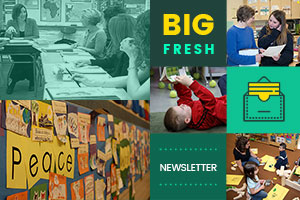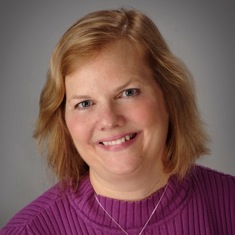Creativity is a habit, and the best creativity is the result of good work habits.
Twyla Tharp
In Write What Matters, Tom Romano explains how he helps students think about where they write, and how it affects their words. He begins with photos from The Writer’s Desk by Jill Krementz. In the book, Krementz captures images of famous writers’ desks. The class dissects a few of the photos together, and this leads naturally into discussions of questions like:
Where do you write?
Do you sit at a desk, or is your lap enough?
How about your chair? Where else do you sit?
How about light? Lamp or no lamp?
What time of day do you prefer to write?
What about sound?
When you aren’t at the computer, what do you write with?
Do you sip something when you work?
What about talismans for comfort and good energy?
Do animals figure into your writing process? (Dogs and cats show up a lot in his students’ writing.)
When I run through this list of questions, it’s easy for me to answer them quickly, and even more important, I visualize exactly where I get most of my writing done. It’s on the comfortable olive green couch in the living room, writing in journals using gel pens with an ergonomic grip before it gets transferred to my computer.
But I’ve been writing for decades, and you likely have been too. How powerful it is to have this conversation with students, or even have them take quick photos of where they work, with their tools laid out. The discussion of writing to music vs. the power of silence can get passionate among teens.
And although these questions are about writing, they are just as useful for prompts about reading at home. If you read accounts of artists at work in books like Daily Rituals by Mason Currey, you realize very quickly there isn’t one set of habits that work for everyone. For every artist who plays hip-hop at full volume to paint, there is a writer who wears earmuffs in the summer to block out the sounds of children at play in her neighborhood. It’s fun and fascinating with any class of students just to see how much variety there is with creative habits. Just learning about the habits of peers can encourage students to shake up their own.
This week we look at how teachers can create cozy and safe spaces for learners. Plus more as always—enjoy!
Brenda Power
Founder, Choice Literacy

Bitsy Parks comforts a crying child after lunch, and realizes how essential it is to continually slow down the fast pace of learning in her classroom.
Shari Frost asks a provocative question: Can books harm children? She explores practical ways for teachers to walk the fine line between support and censorship in matching books to students.
Christy Rush-Levine takes an oddly shaped unused nook in her classroom and turns it into a charming space where students can choose to take a quiet break with a “Self-Imposed Time-Out” (SITO).
Looking for a cozy, safe, and fun space to learn this summer with other teachers and school leaders? You can meet many of your favorite Choice Literacy writers this summer at The Lead Learners Summer Institute in Warsaw, Indiana on June 22-23. Choice Literacy members receive discounts of 20-40% off the institute fee based on your membership tier. For more information on presenters and workshop descriptions, click here.

New members-only content is added each week to the Choice Literacy website. If you’re not yet a member, click here to explore membership options.
Christy Rush-Levine ponders what it means to create a safe space for all of her middle school students, and then makes some changes.
Ruth Ayres eavesdrops on some moms complaining about homework assignments, and finds the experience leads to reflection on the dangers of forcing students to make themselves vulnerable in classrooms.
In this week’s video, Dana Murphy leads a minilesson on revision by sharing her own writing with a theme of tackling a challenge during a difficult time in her life.
In an encore video, Eddie is a six-year-old student who speaks Cantonese as his first language. In this conference with Ruth Shagoury, there is little English spoken, and yet there is much communication through gestures and shared history to create a safe and cozy space for learning.

Lead Literacy now has a new home as the Leaders Lounge at Choice Literacy. We’ll be posting the new content updates here in the Leaders Lounge section of the Big Fresh newsletter.
Ruth Ayres attends a share session at the end of a second-grade writing workshop conducted entirely in Spanish. It’s a gift and privilege for her to experience what non-native speakers do every day in English language classrooms, and it makes her reflect upon what it takes to make anyone feel welcome in a classroom or school community.
Physical education classes are the “last frontier” for creating cozy and safe spaces for learners. Jen Schwanke is surprised when one of her best language arts teachers applies for an open physical education position. The experience teaches her a lot about how literacy workshop principles can inform any subject area.
Angela Stockman shares a case study of how a physical education department created a compassion-based curriculum.
Quote It:
We need to make the world safe for creativity and intuition, for it’s creativity and intuition that will make the world safe for us.
Edgar Mitchell
That’s all for this week!



